What to Look for When Buying Used Tires? Ultimate Guide
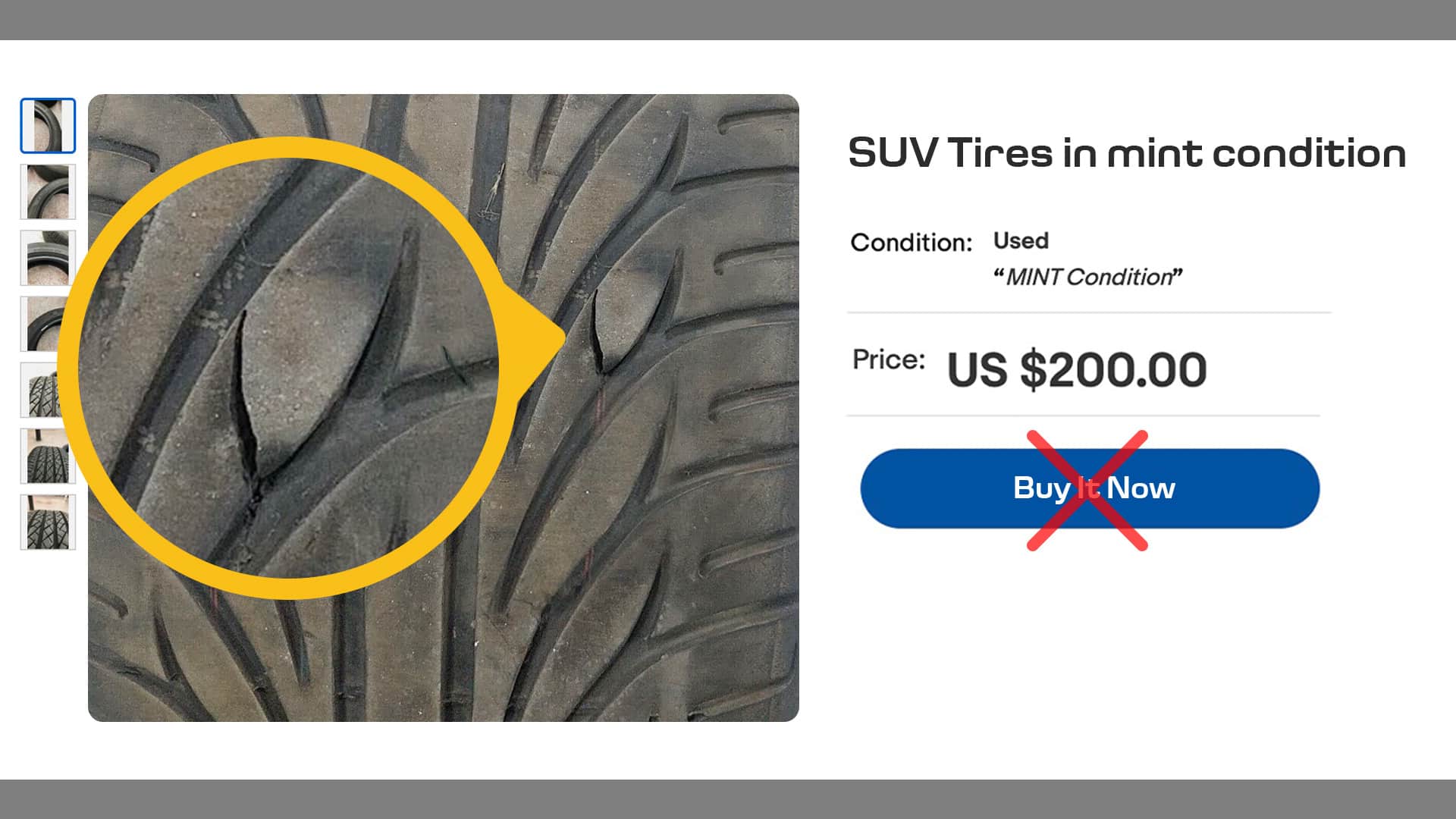
If you’re a bargain hunter like me, then you know that thriftiness is key to a happy wallet when it comes to tinkering with your car. However, making the wrong choice could end up costing you double the price. Just like with any purchase, there are advantages and disadvantages when it comes to choosing used parts.
On one hand, purchasing used parts, such as tires, can save you a bundle of cash if you do your research right. By getting yourself a $1000 tire set for just $200 that still has more than 50% life left in them, you could potentially strike gold and get an amazing long-term investment for your ride.
However, don’t let the low prices fool you – there will always be potential hurdles along the way. This is why I have put together some tips on how to buy your used tires smartly:
What to Look for When Buying Used Tires?
Check The tread Depth
When it comes to buying used tires, tread depth is key. The average tire starts out with about 10/32 – 12/32 of an inch of life before it starts to wear down.
Once you hit the 4/32 mark, that’s a red flag that the tires may need replacing soon. So, if that potential purchase is creeping closer to the 4/32 line, you might want to think twice before making a commitment.
How To Check The Tread Depth?
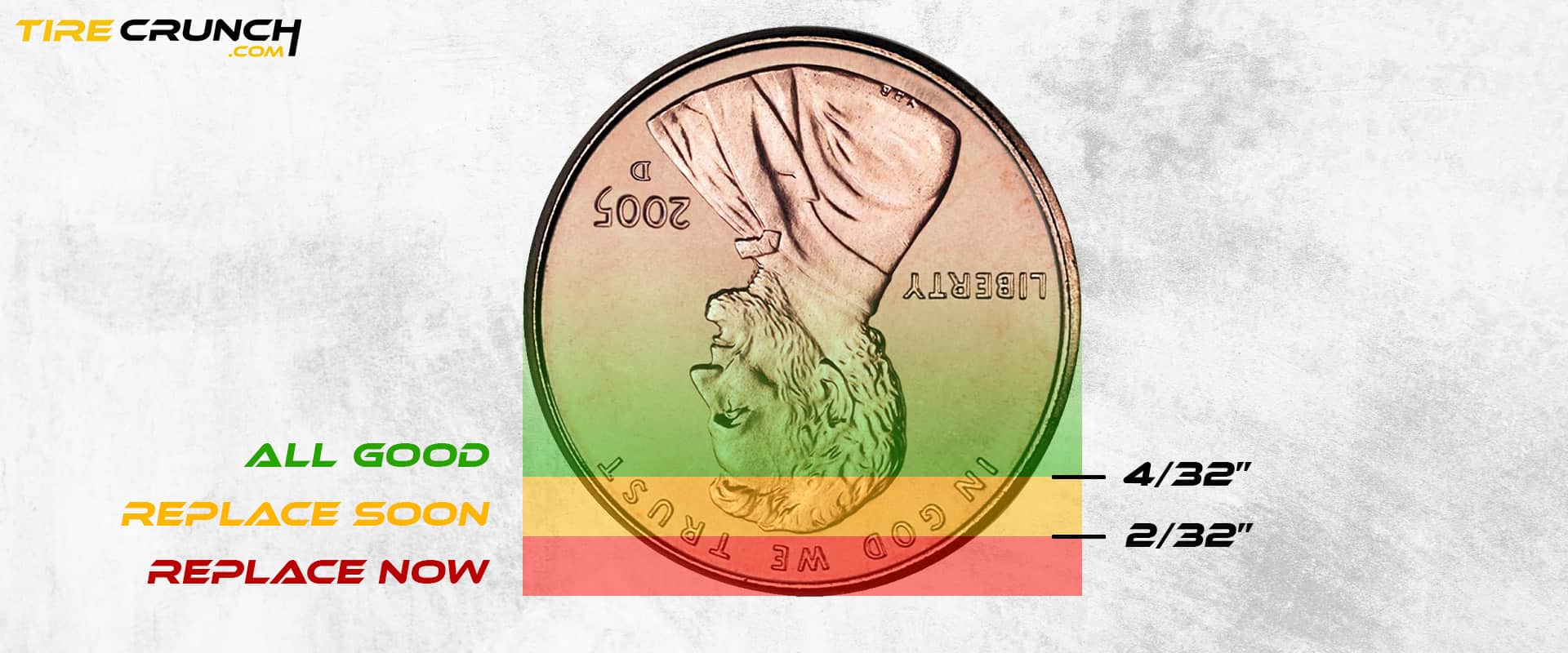
Checking your tire’s tread depth doesn’t have to be complicated either. Even if you don’t have fancy equipment, all you need is a penny and a moment of time – insert the penny upside down into the tread groove so Lincoln’s head faces downward.
Check The tread For Uneven Wear
We strongly advise against purchasing tires that have any uneven tread wear patterns mentioned below.
– Inner and/or outer edges wear
If the inner and/or outer regions of the tire appear more worn than the center part, this could indicate that the tire has been used for a long time in an underinflated state or that the vehicle had some suspension issues.
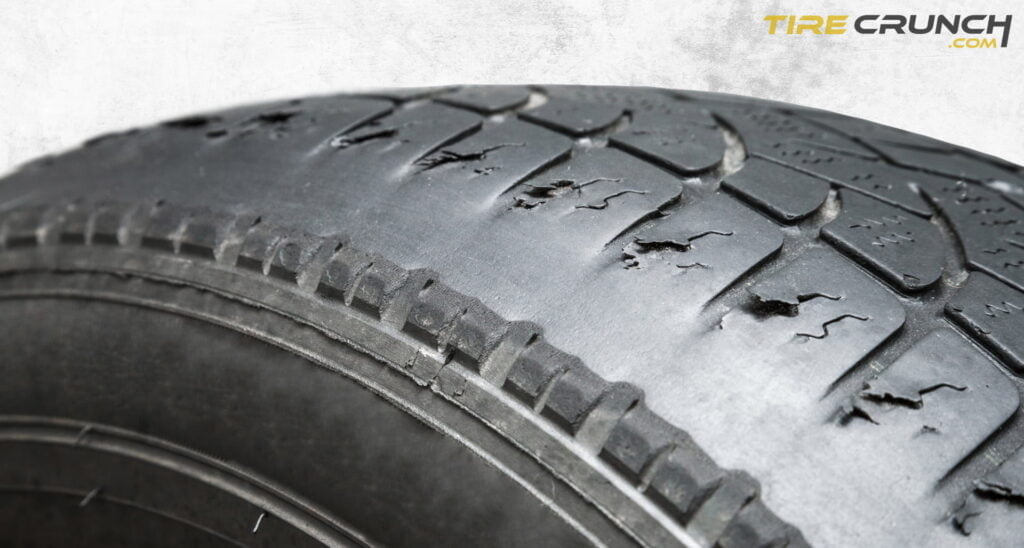
– Center Wear
The exact opposite scenario can happen too, where only the center parts are notably more degraded than both sides of each tire; which should raise suspicion toward the fact that the tire has been driven in an over-inflated state.
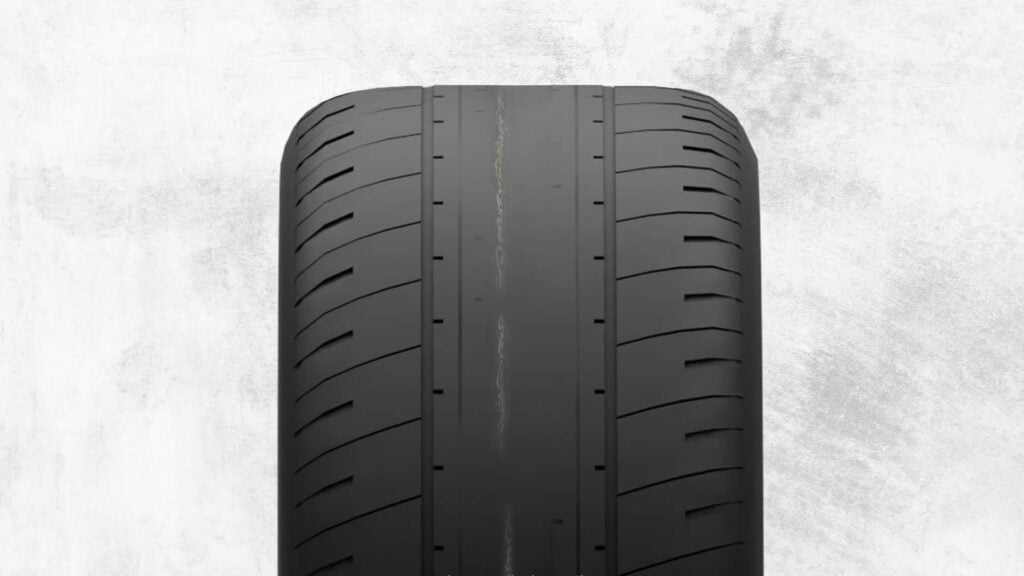
– Feathering
Feel the tire’s surface with your hand – it should feel smooth. But if you sense some parts are catching and others not, watch out – this could signal feathering.
Feathering usually happens when the vehicle’s alignment gets skewed.
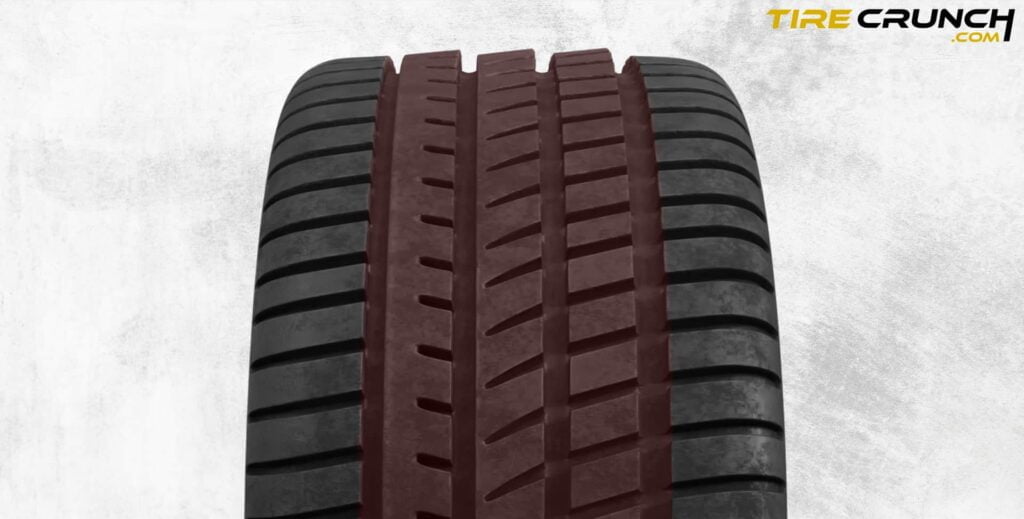
– Cupping
One way to check for tire cupping is by feeling the treads with your own hand. Expect bumps or waves as bad news bears, indicating that there’s no time to waste in checking the tire further.
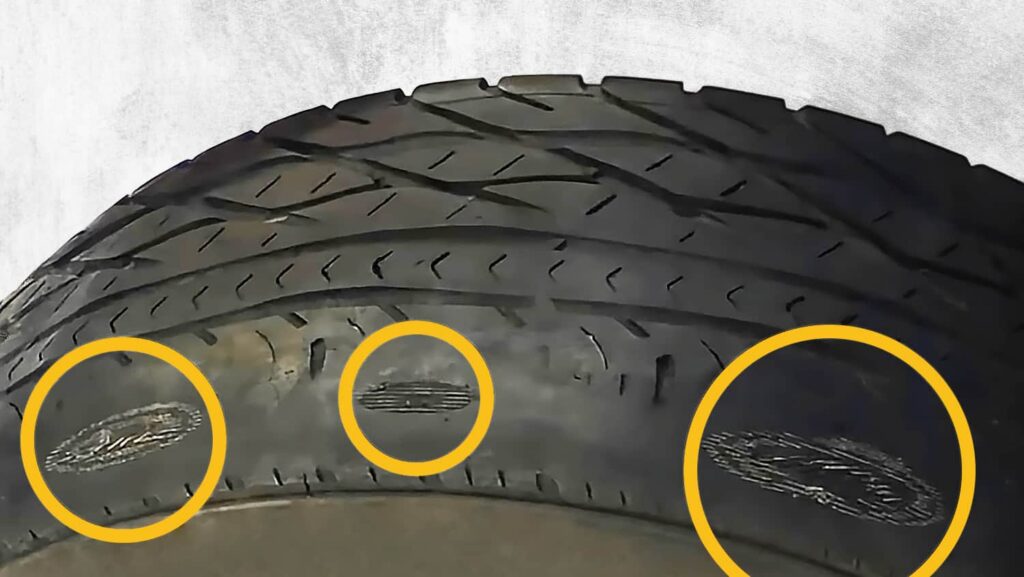
– Cracks Within The Tread
Keeping an eye out for cracks within a tire’s treads is a non-negotiable step towards ensuring safety; cracks in the tire mean tires are at higher risk of failure.
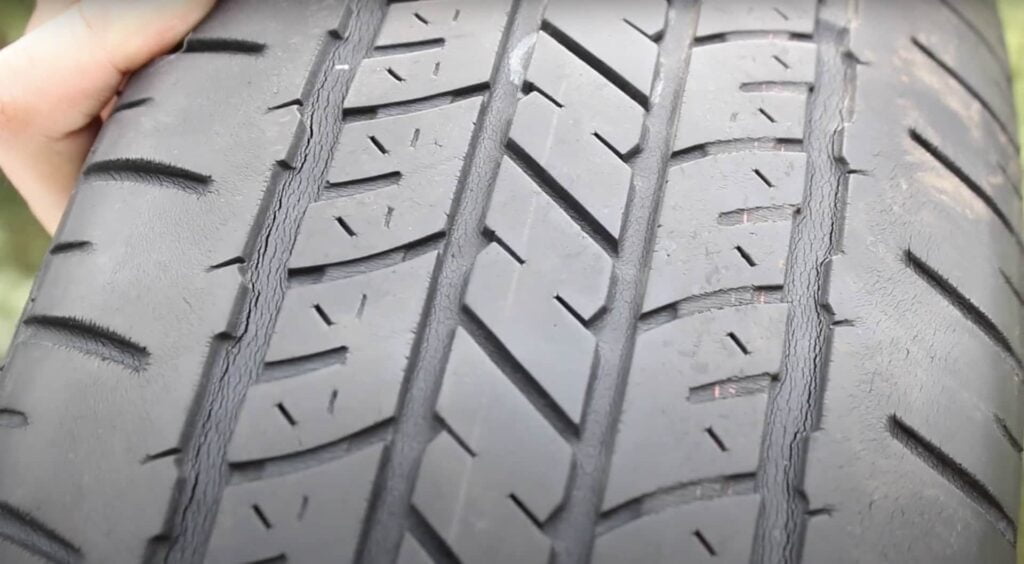
Check For sidewall Damage
So you’ve found a used tire with decent tread – great! But don’t celebrate just yet, because there’s still more work to be done before you can ensure your safety on the road.
– Sidewall cracks
Take a close look at the tire’s sidewall. Visible cracks are big red flags that indicate underlying issues. This type of damage can compromise its integrity and make it more prone to blowouts or flats during use.
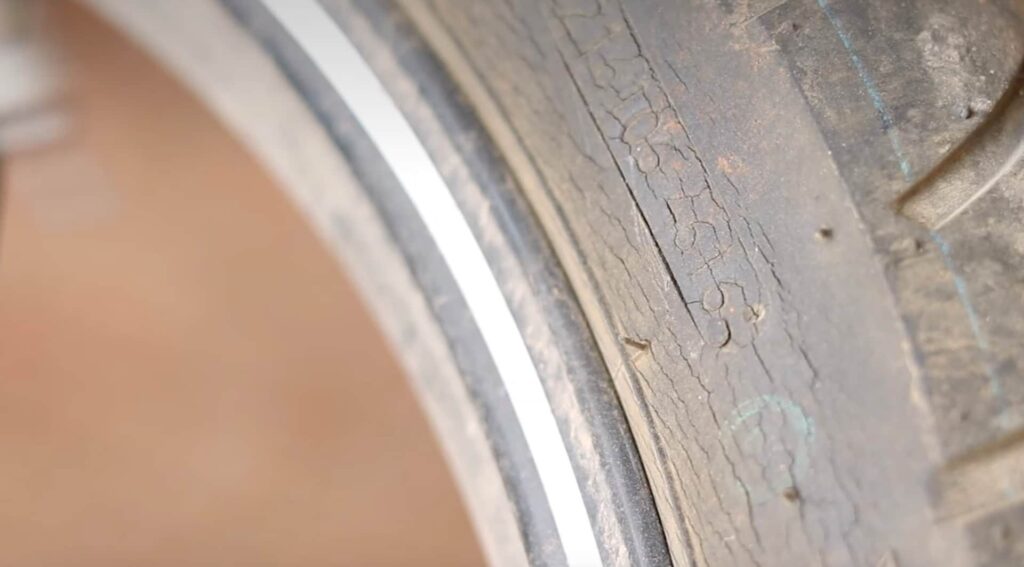
– Sidewall Bulges/Bumps
But what about bumps or other irregularities in the sidewall? Think of those as warning signs similar to lumps under our skin – they may indicate an issue that goes deeper than what we can see on the surface.
There’s always the possibility that an impact has forced the rubber to delaminate from its belts, which means it won’t be able to support your car no matter how good its treads are.
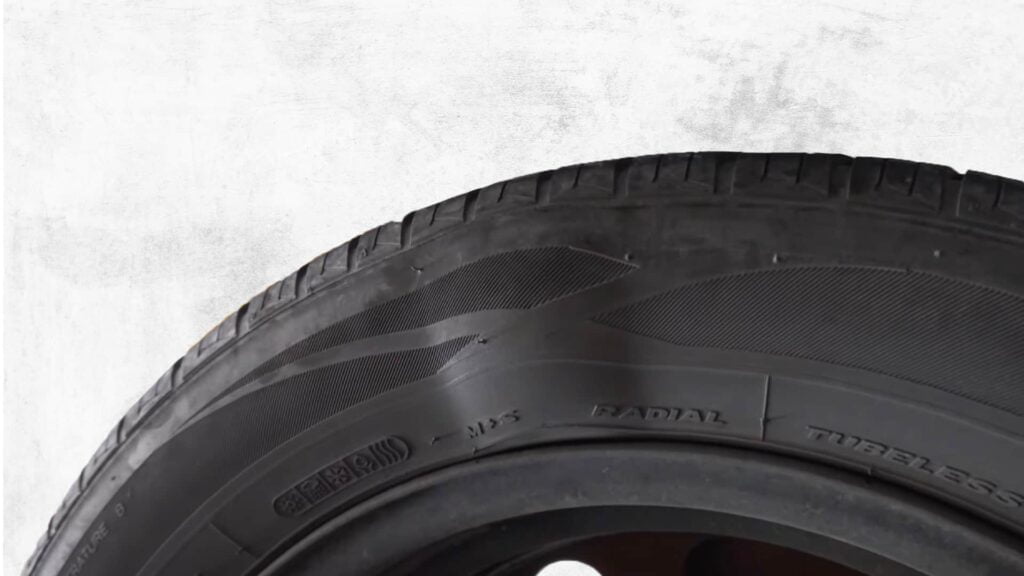
Check The Inside For Previous Repairs
– Patches and Plugs
Plugs and patches on the inside of a tire indicate previous damage. Though these methods may have made the tire safe enough to use again, it’s always better to invest in tires without any such flaws where possible.
If you still consider going on with the purchase, don’t be afraid to negotiate with the seller – perhaps they’ll be willing to lower the price given this issue.
But be wary of any tires with punctures or repairs within an inch of the sidewalls – these most likely end in structural damage that could compromise the tire’s integrity.
Tires with this kind of repair are a big NO-NO.
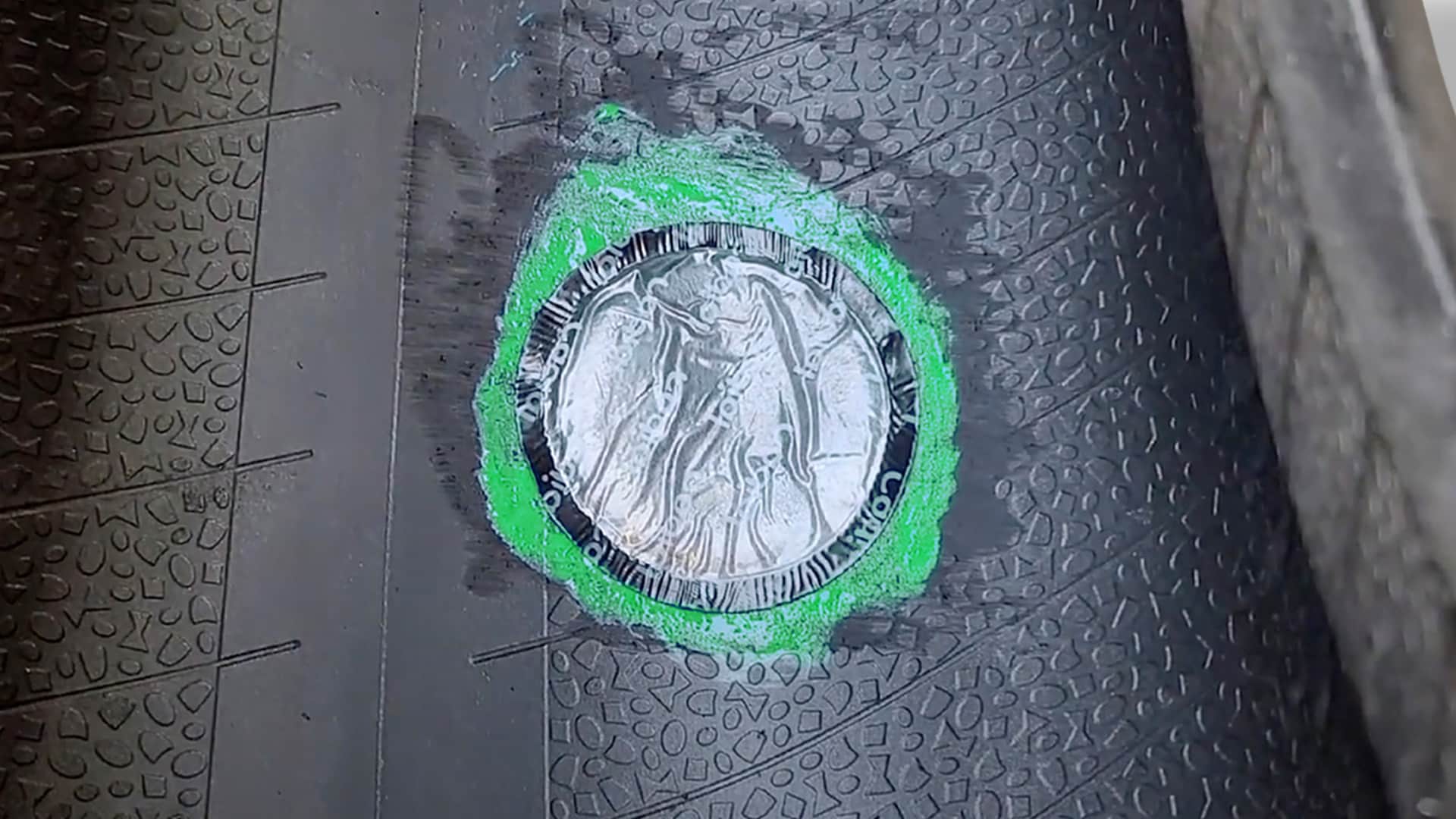
Check The Age of The Tire
According to the tire manufacturer Michelin, if the tires have been in use for five years or longer, you should get them checked at least once a year by a tire service expert. They might still be good but that’s the usual time spot when these are starting to degrade.
At ten years old, even the most well-maintained tire is past its prime and ready for retirement. But how can you tell if a tire has reached its age limit?
Every tire produced after 2000 has a numeric code indicating when it was made. For example, a code like “1914” would mean it was produced during the 19th week of 2014 while “1520” means the tire was born during the 15th week of 2020.
Our recommendation is to NOT purchase tires that are older than 5 years.
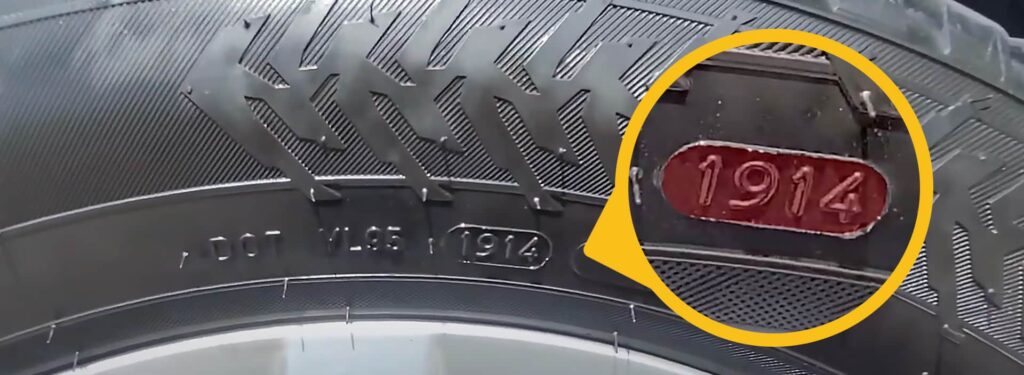
Know the Tire Treadwear Rating
Here’s what you need to know about the treadwear rating: the lower the treadwear rating, the softer the tire material and thus, the quicker it will wear out (but, the more grippy the tire will be).
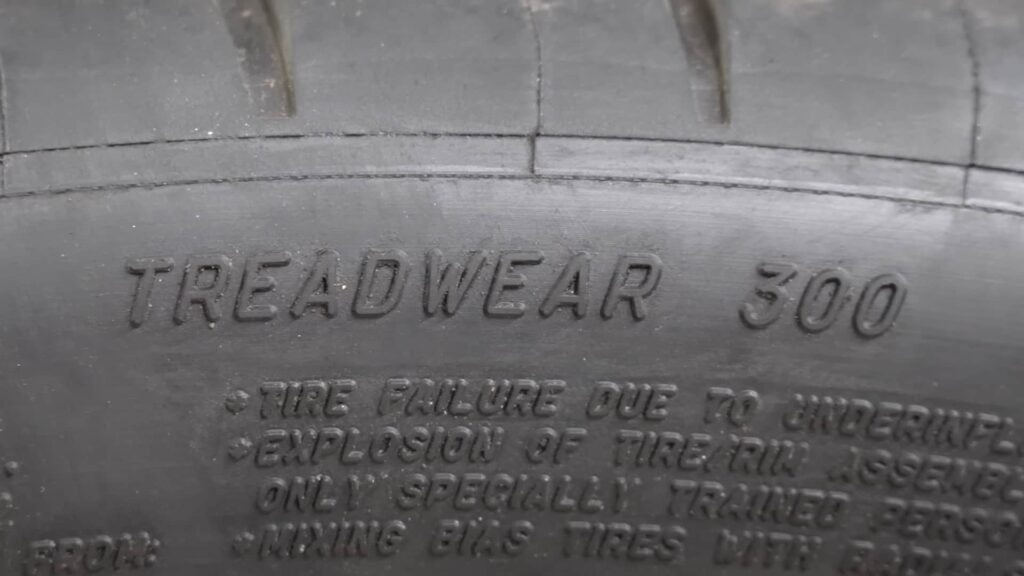
Tire Brand & Original Retail Price
Doing your research beforehand can be an important step when looking into used tires. A few useful questions to ask – what is this tire retail price and how does it compare to what I’m being asked to pay? What are others’ opinions or experiences with using these tires?
If Google searches aren’t cutting it, consider checking out sites like TireRack.com. Not only do they offer a plethora of reviews and information on a broad selection of tire brands and models, but often at competitive prices.
And if the used tire deal isn’t quite working out in your favor financially, don’t hesitate to look into buying new instead.
Tire Size
We’ve all heard the phrase “size matters”, and it couldn’t be more true when it comes to buying used tires! Before you even begin your search, make sure you know exactly what size of tire fits your vehicle. This goes beyond just making sure they look roughly the same as what’s already on there – choosing the wrong size can ultimately lead to car damage or even a serious accident.
So how do you find out what size tires you need? Check for numbers on the tire’s sidewalls – these indicate its’ dimensions such as width, aspect ratio, construction type, and diameter.
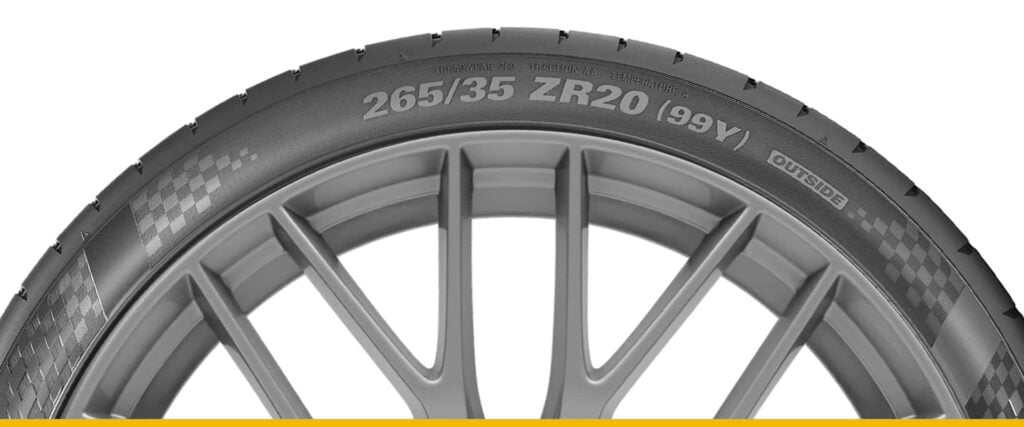
For example: 265/35 ZR20. The first number (265) is its width in millimeters, while the aspect ratio (35) shows how tall its sidewall is in proportion to that width. Tires with higher aspect ratios generally come with taller sidewalls than those with lower ratios.
Next up is R for radial construction methods, followed by 20 which signifies its diameter in inches.
Speed Rating and Load Index
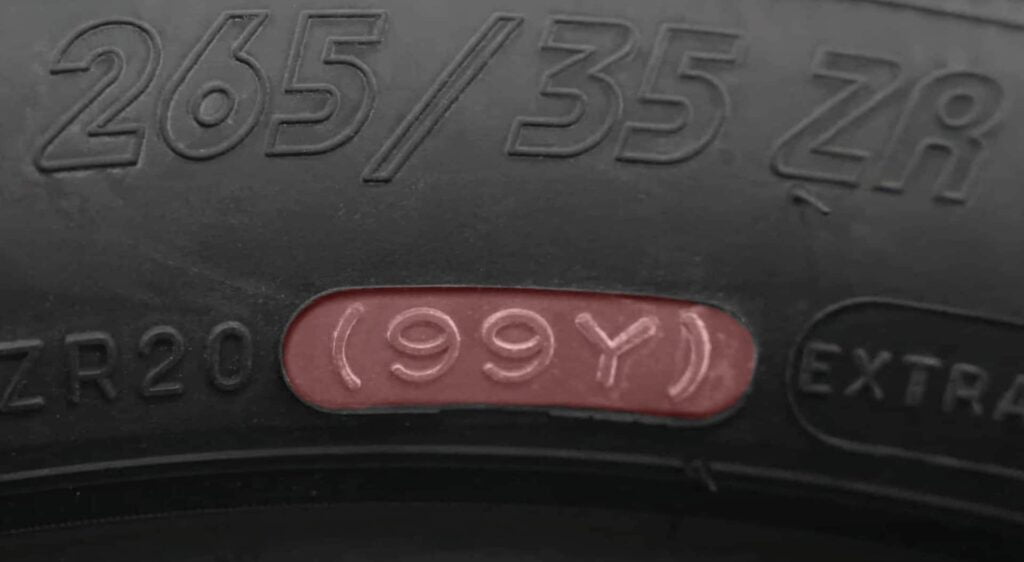
Put simply, a tire’s speed rating indicates the maximum speed at which it can safely perform. This measurement is often based on speeds certain vehicles top out at.
For example: let’s say you’re looking into a Y-speed-rated tire. This would mean that this tire has a maximum safe capability of supporting speeds up to 186 mph or 300 km/h respectively.
| Symbol Speed | Speed (mph) |
| B | 31 |
| C | 37 |
| D | 40 |
| E | 43 |
| F | 50 |
| G | 56 |
| J | 62 |
| K | 68 |
| L | 75 |
| M | 81 |
| N | 87 |
| Symbol Speed | Speed (mph) |
| P | 94 |
| Q | 100 |
| R | 106 |
| S | 112 |
| T | 118 |
| U | 124 |
| H | 130 |
| V | 149 |
| W | 168 |
| Y | 186 |
The load index refers to how much weight a tire can safely support when inflated to appropriate levels. For reference: most vehicles come with tires ranging from 75-100 for their load index. Keep in mind that high-load capacity ratings can make a significant difference if what you’re hauling is heavier than average.
You can check the tire load index chart here.
Popular Places to Buy Used Tires
So you’re ready to take the plunge on some new-to-you tires – but where do you start? Here are some of the most popular places drivers tend to look into when searching for used tire options:
Why should you buy used tires?
FAQs
How Long Do Used Tires Last On Average?
The estimated span of a used tire can vary widely depending on factors such as age, tread wear, damage and repairs, and maintenance. As a general rule though: well-maintained tires in good condition should last around 2-5 years before needing to be replaced.
How Much Should You Pay For Used Tires?
First off, as expected, the price of used tires is usually well below the original cost of new ones. This can typically range anywhere from 30-50% off depending on multiple variables including tire type (e.g. all-season or snow), tread wear, age or even number of tires bought collectively.
Prices can still vary quite a bit between brands however – and unsurprisingly so! Tires produced by popular car makers can fetch higher prices than lesser-known counterparts.
Are Used Tires Safe?
Buying used tires may seem risky, but that’s not the whole truth. While some warn against buying them due to safety concerns, keeping certain factors in mind can help you determine if a tire is road-worthy or not.
Keep an eye out for red flags like uneven wear patterns, damaged sidewalls or liners, insufficient tread depth, excessive vibration and old age when determining if a particular used tire is safe to use.
